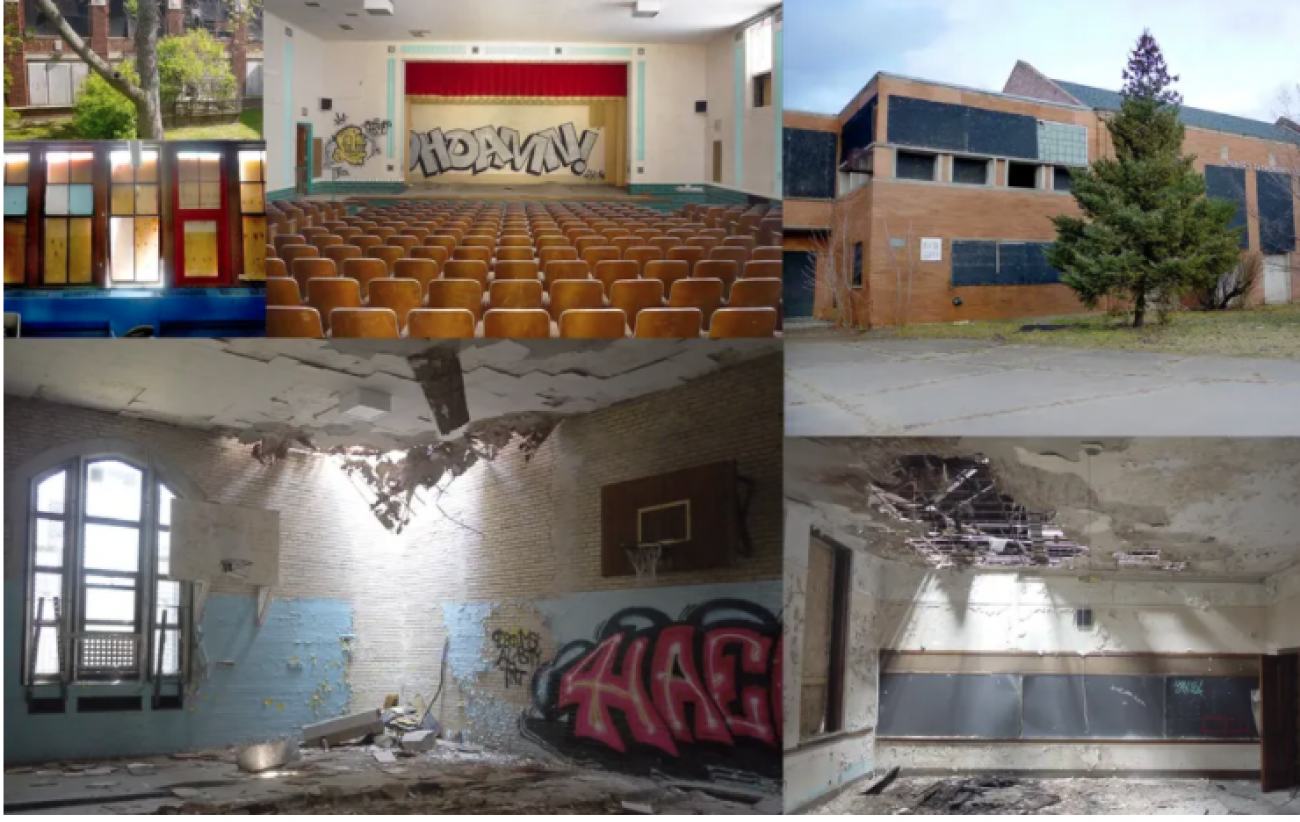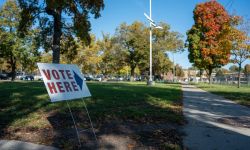What’s next for abandoned schools in Detroit? Neighbors say almost anything is better than vacancy.

What’s next for abandoned schools in Detroit? Neighbors say almost anything is better than vacancy was originally published by Chalkbeat, a nonprofit news organization covering public education. Sign up for their newsletters here: ckbe.at/newsletters
The City of Detroit is looking for developers to revitalize dozens of vacant school buildings following years of demands by residents that something be done with the properties.
Over the last year, engineers and architects visited unused schools across the city, measuring the buildings and estimating the cost of repairs hoping to convince developers to find new uses for the schools. The buildings could see a wide range of new purposes, including as housing, community centers, industrial facilities, or — more controversially — charter schools.
Neighbors have long told local officials that almost anything would be better than leaving the buildings vacant. While the buildings are generally structurally sound, some have been left open to the elements, vandalized, and stripped of valuable metals. Typical redevelopment costs are $5 to $15 million according to city estimates.
Related:
- School administrators worry as Michigan returns to stricter pupil accounting rules
- Leftover child care money gives a boost to cash-strapped Michigan providers
- Full-time virtual schools expand in Michigan in wake of COVID
- Michigan education programs are training teachers, but hundreds aren’t passing the licensing exam
Those price tags come as no surprise to Sandra Turner-Handy, a leader of the Denby Neighborhood Alliance, who lived near Wilkins, one of the city-owned schools, and knows it’s in bad shape.
“I drive by there and shake my head,” she said. “My daughters went there. They lived on the corner of that street.”
“The disinvestment around these closed schools is so evident. When they don’t pick up these buildings and do something with them it represents their disinvestment in the whole community.”
School buildings anchor communities, serving as gathering places and public resources or more. When they become vacant and deteriorate — as they did in major cities around the country, a trend driven by deindustrialization and white flight — the surrounding neighborhoods often suffer.
Detroit is an extreme example of school closures, and empty buildings remain a painful reminder to residents of two decades of declining enrollment and disinvestment. Two hundred schools closed during that time, and many remain standing. Like other abandoned properties, schools contribute to chronic absenteeism because they increase students’ fears of walking to school.
In 2014, the city forgave millions of dollars of unpaid Detroit Public Schools electrical bills in exchange for some of its vacant properties — 57 schools in total. The most dilapidated buildings were torn down, but 39 stayed standing and have been largely neglected for years.
In total, the project cost $858,000. The city covered the cost of a detailed accounting of the 39 city-owned buildings, while the Detroit Public Schools Community District chipped in $223,000 for surveys of two dozen district-owned buildings. The documentation, which is available online, includes the estimated cost to redevelop each property along with architectural measurements and a survey of existing land uses, population, and community needs in surrounding neighborhoods. Public meetings to discuss redevelopment possibilities are in planning stages, city officials said.
City representatives also created less detailed reports on the vacant buildings still owned by Detroit Public Schools Community District. That information isn’t included on the project website, but it was provided to the district and will be incorporated into an upcoming facilities plan.
“The analysis will inform the district’s 20-year facility plan, which will be presented to the school board in January,” district spokesperson Chrystal Wilson said in a statement. “This plan will make recommendations for the current use of all school buildings, those being used and those vacant.”
Residents have been attending public meetings for years to demand that something be done with the properties. Turner-Handy called them an “eyesore” and said they bring down the value of surrounding properties.
The next step for the buildings is “a three-way match-making process between what the building could be, what the neighborhood needs, and what the developer can do,” said Andrew Wald, a lead consultant on the project and head of the Detroit office for Interboro, an architecture and planning firm.
“We have a good understanding of the buildings,” he added. “Now it’s about going out and finding the developers, the people who have the ability to take on these projects, and getting them talking with the community.”
The community’s response will hinge in part on how the building is being used. Garrick Landsberg, director of historic preservation for the city, said a wide range of new uses are possible, including for new charter schools, though he noted that many of the buildings are too large for most new Detroit schools. The Detroit district has in some cases sought to prevent charter schools from opening in its former buildings, but not this time. The Detroit Public Schools didn’t include a clause preventing future use by charter schools when it gave the buildings to the city in 2014, said city spokesman Dan Austin.
Charter schools enroll a higher portion of students in Detroit than in almost any U.S. city, and new charter proposals can still be controversial. Opponents say charters increase competition for students in a city where many schools are already struggling with enrollment, while supporters point to the relatively high test scores posted by the highest-performing charter schools.
Some Detroiters welcomed the news earlier this year that KIPP, a national charter operator, proposed to build a school on city-owned land. But activists pushed back, and KIPP eventually dropped the proposal and is seeking property elsewhere in the city.
“At this point, I’m okay with charter,” said Aliya Moore, a community activist who was the PTA president at Oakman when the school was shuttered in 2012 by a state-appointed emergency manager. The Oakman building was designed to serve people with disabilities, and Moore said she wants to see it used for that purpose.
Not everyone is ready to accept a new charter school in a former district building. The city shouldn’t take bids from charter school operators, said Helen Moore, a community activist (no relation to Aliya).
“We do not want or need any more charter schools in the city of Detroit,” she said. “If that’s what they want to do with the schools, I think it’s wrong. If they went in the direction of more housing for the city and using the buildings for that purpose, that would be a positive.”
No matter what use is found for the vacant schools, the community should benefit, said Derrick Williams, whose son attended Oakman. The school was an anchor of the community, he said — he played Santa Claus at holiday parties.
“When the school closed, people moved out, the neighborhood went down,” he said. “A lot of people had moved over in that area because the school was right there. The school was family oriented, we all looked out for the kids.”
Today, he said, “you ride past the building and get sad.”
Chalkbeat is a nonprofit news site covering educational change in public schools.
Michigan Education Watch
Michigan Education Watch is made possible by generous financial support from:
Subscribe to Michigan Health Watch
See what new members are saying about why they donated to Bridge Michigan:
- “In order for this information to be accurate and unbiased it must be underwritten by its readers, not by special interests.” - Larry S.
- “Not many other media sources report on the topics Bridge does.” - Susan B.
- “Your journalism is outstanding and rare these days.” - Mark S.
If you want to ensure the future of nonpartisan, nonprofit Michigan journalism, please become a member today. You, too, will be asked why you donated and maybe we'll feature your quote next time!





